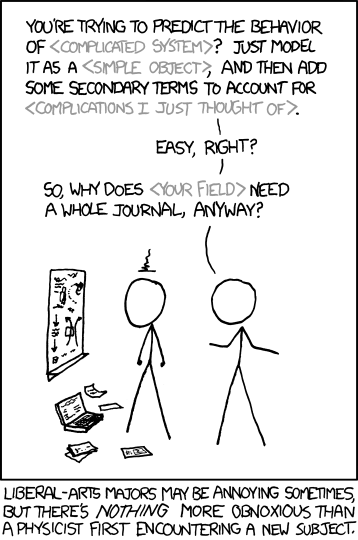While we’re on crossovers between statistics and brick-sized fantasy novels, I remember taking some notes on references to math, logic, and probability in Robert Jordan’s Wheel of Time book series.
(I really can’t recommend the series. I enjoyed the first few books in middle school, but in a re-read last year they haven’t stood up to my childhood memories. The first is still fun but a blatant Tolkien ripoff; the rest are plodding and repetitive.)
Readers, can you recommend any good fantasy / sci-fi (or other fiction) that treats stats & math well?
The Dragon Reborn
A few of the characters discuss the difference between distributions that show clustering, uniformity, and randomness:
“It tells us it is all too neat,” Elayne said calmly. “What chance that thirteen women chosen solely because they were Darkfriends would be so neatly arrayed across age, across nations, across Ajahs? Shouldn’t there be perhaps three Reds, or four born in Cairhien, or just two the same age, if it was all chance? They had women to choose from or they could not have chosen so random a pattern. There are still Black Ajah in the Tower, or elsewhere we don’t know about. It must mean that.”
She’s suspicious of the very uniform distribution of demographic characteristics in the observed sample of 13 bad-guy characters. If turning evil happens at random, or at least is independent of these demographics, you’d expect some clusters to occur by chance in such a small sample—that’s why statistical theory exists, to help decide if apparent patterns are spurious. And if evil was associated with any demographic, you’d certainly expect to see some clusters. The complete absence of clustering (in fact, we see the opposite: dispersion) looks more like an experimental design, selecting observations that are as different as possible… implying there is a larger population to choose from than just these 13. Nice 😛
There are also records of historical hypothesis testing of a magical artifact:
“Use unknown, save that channeling through it seems to suspend chance in some way, or twist it.” She began to read aloud. “‘Tossed coins presented the same face every time, and in one test landed balanced on edge one hundred times in a row. One thousand tosses of the dice produced five crowns one thousand times.'”
That’s a degenerate distribution right there.
Mat, the lucky-gambler character, also talks of luck going in his favor more often where there’s more randomness: he always wins at dice, usually at card games, and rarely at games like “stones” (basically Go). It’d be good fodder for a short story set in our own world—a character who realizes he’s no braniac but incredibly lucky and so seeks out luck-based situations. What else could you do, besides the obvious lottery tickets and casinos?
The Shadow Rising
I was impressed by Elayne’s budding ability to think like a statistician in the previous book, but she returns to more simplistic thinking in this book. The characters ponder murder motives (p.157):
“They were killed because they talked […] Or to stop them from it […] They might have been killed simply to punish them for being captured […] Three possibilities, and only one says the Black Ajah knows they revealed a word. Since all three are equal, the chances are that they do not know.”
Oh, Elayne. There are well-known problems with the principle of insufficient reason. Your approach to logic may get you into trouble yet.
Lord of Chaos
The description of Caemlyn’s chief clerk and census-taker Halwin Norry is hamfisted and a missed opportunity:
Rand … was not certain anything was real to Norry except the numbers in his ledgers. He recited the number of deaths during the week and the price of turnips carted in from the countryside in the same dusty tone, arranged the daily burials of penniless friendless refugees with no more horror and no more joy than he showed hiring masons to check the repair of the city walls. Illian was just another land to him, not the abode of Sammael, and Rand just another ruler.
If anything, Norry sounds like an admirable professional! Official statisticians must be as objective and politically disinterested as possible; else the rulers can make whatever “decisions” they like but there’ll be no way to accurately carry them out when you don’t know what resources you actually have on hand nor how severe the problem really is. It’d be fascinating to see how Norry actually gets runs a war-time census—perhaps with scrying help from the local magic users? But here Jordan is just sneering down. Such a shame.
Knife of Dreams
There are a few ridiculous scenes of White Ajah logicians arguing; I should have noted them down. I’m not sure if Jordan really believes mathematicians and logicians talk like this, or whether his tongue is in cheek and he’s just joking, but man, it’s a grotesque caricature. Someday I’d love to see a popular book describe the kind of arguments mathematicians actually have with each other. But this isn’t it.



